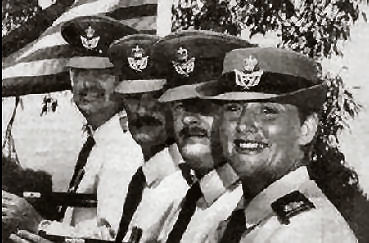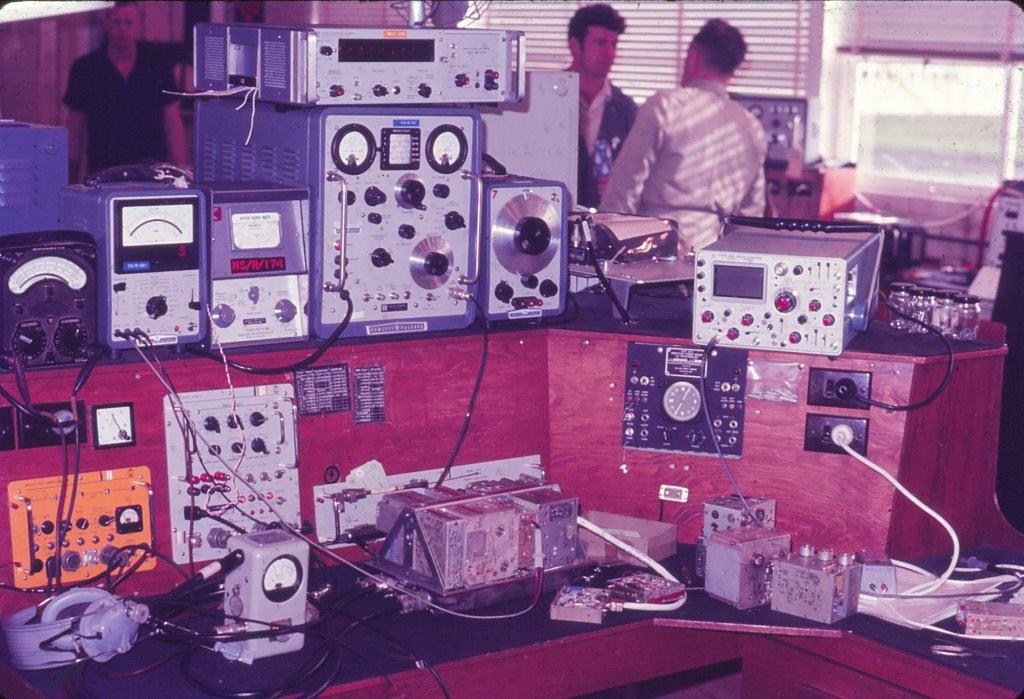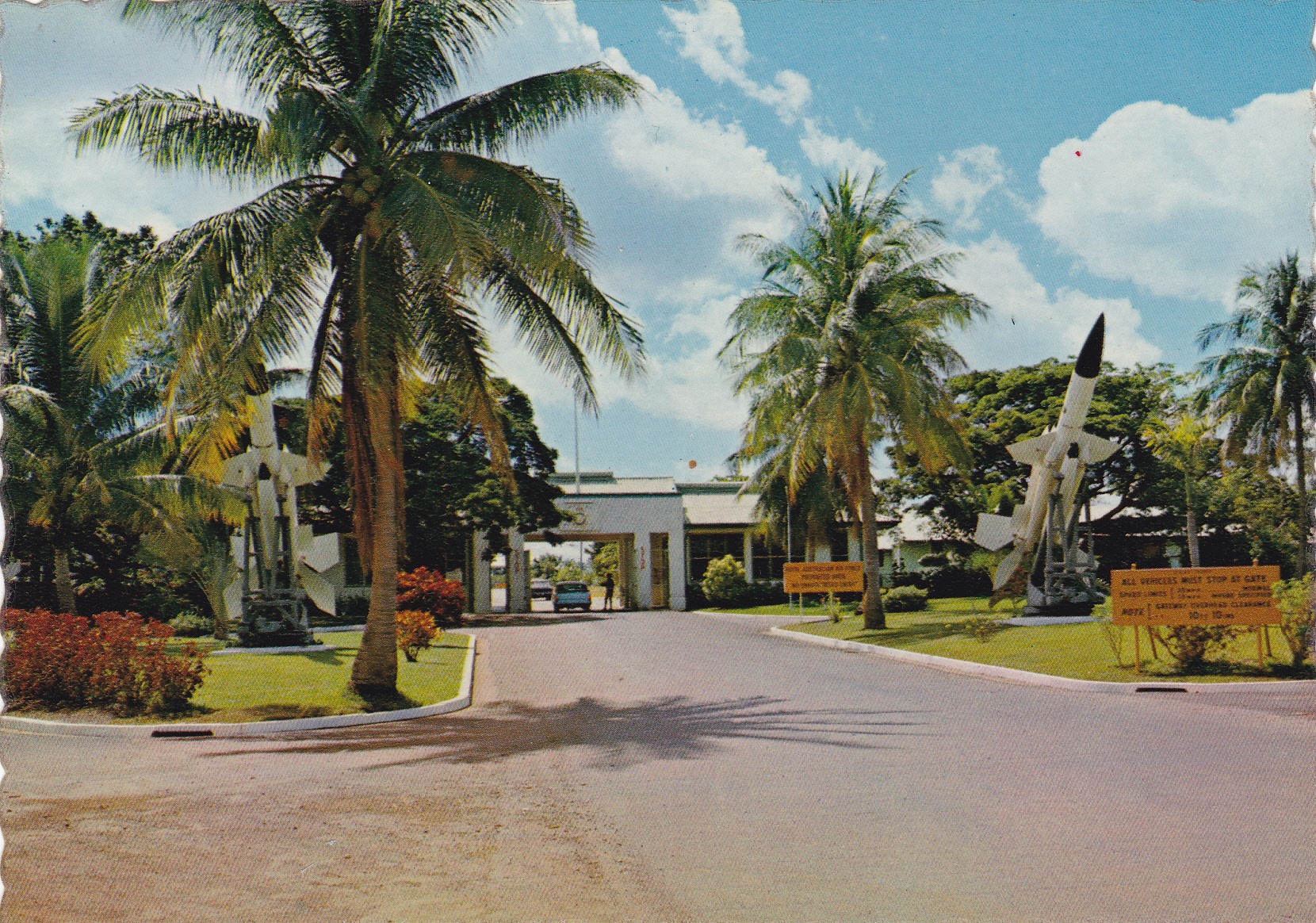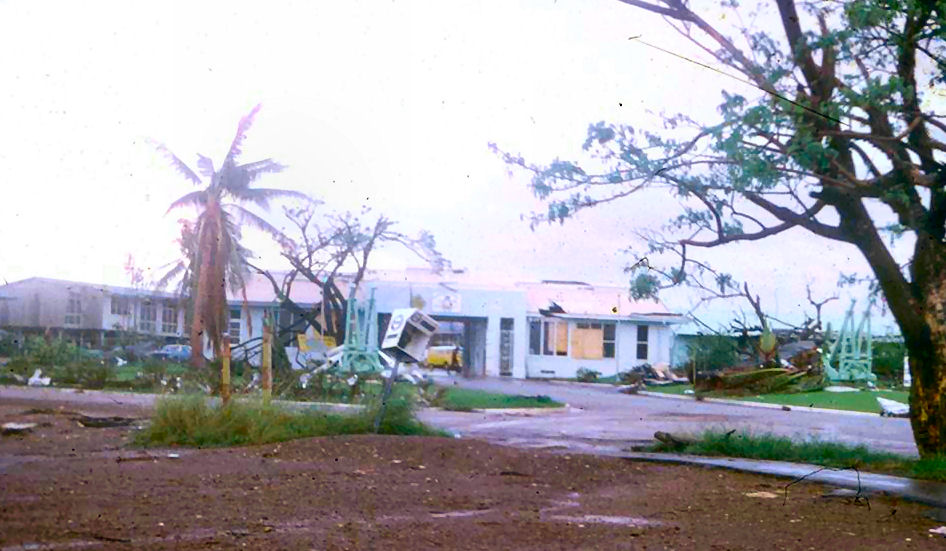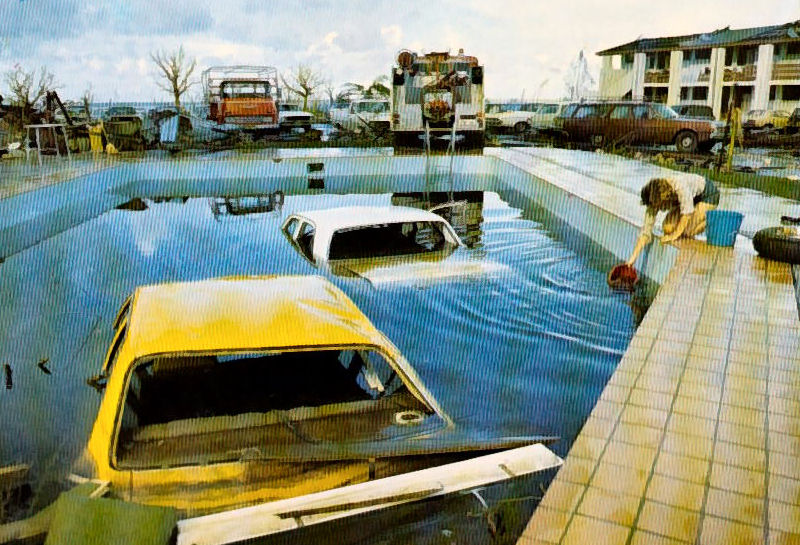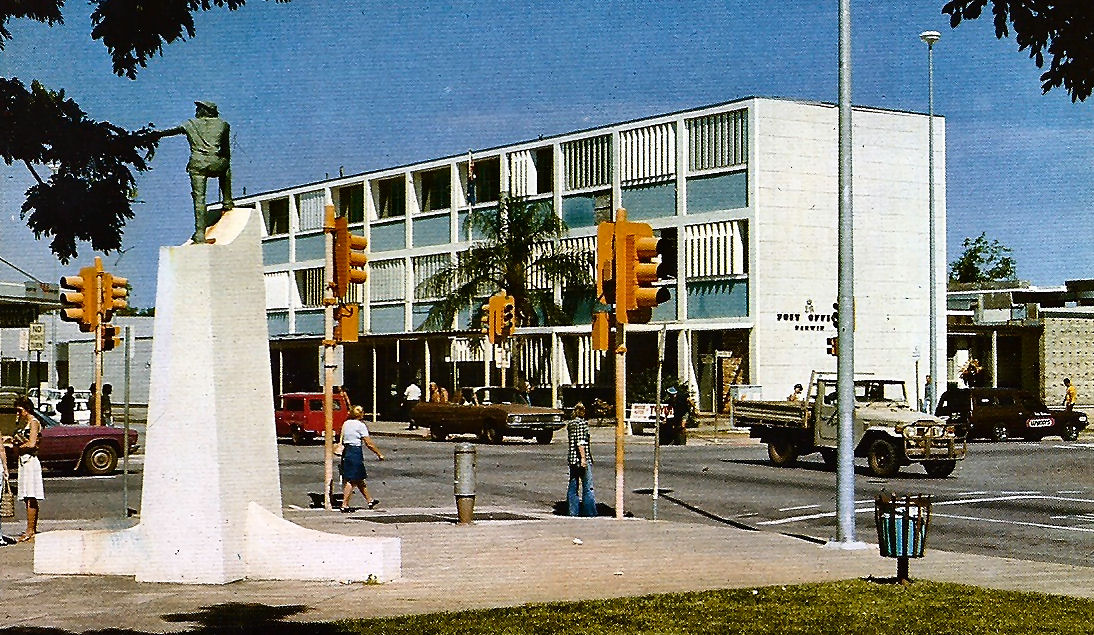|
Radschool Association Magazine - Vol 46 Page 5 |
|
|
Privacy Policy | Editorial Policy | Profit Policy | Join the Association | List of Members | Contact us | Index | Links |
|
|
Back Go to page: 1 2 3 4 5 6 7 8 9 10 11 12 13 14 15 16 17 18 19 20 Forward |
|
|
|
|
|
Laverton.
Jim Millican was at Laverton recently, he took a couple of photos and has sent them to us. Jim says “recently they started demolition of the Radschool living-in blocks (the H blocks) in front of the canteen at Laverton. Here is a photo showing the demise of the block in which I lived”.
|
|
|
|
|
|
|
|
|
|
|
|
|
|
|
The blocks being torn down are at the far left of the photo above. The road to the right leads down to the front gate.
While we were at Point Cook for the airshow in March we heard a strong rumour, (and it was only a rumour), that the land on which Laverton stands is being readied for sale. All existing “units” on Laverton will be moved down to Point Cook and Laverton will be sold off to developers. Probably just a rumour but if you think about it, it does make sense. The airstrip went some years ago and having two “retired” bases so close together is a bit like owning a boat, it’s just a big hole in which you throw money. Pt Cook is the obvious keeper due to its heritage value but is there any truth in the rumour? like everything else, time will tell.
|
|
|
Butterworth
And talking of closing bases, the Malaysian Government has decided that
Butterworth has outlived its usefulness and it too will be sold off to
developers. The following article
The area around Butterworth has undergone a rapid transition from Olde Worlde to the New Age in recent times with the latest proposed redevelopment of the area including the land now occupied by the Royal Malaysian Air Force (RMAF) airbase. These days there is no Mitchell Pier which at one time was the busiest terminal in the northern region for buses, ferries and trains. And no longer do people refer to the vibrant neighbourhood around the airbase as Mata Kuching for they are all going or gone, disappearing just like the delectable satay near the jetty, tastiest nasi kandar at the morning market in Jalan Bagan Luar or best yong tau foo at Pantai Bersih this town once offered.
|
|
|
|
|
|
|
|
|
Those indeed were the days when people travelling to Penang island from, say, Kedah or Perlis, using the main trunk road, would unavoidably be passing the airbase which for many years was occupied by the Royal Australian Air Force (RAAF) and the Royal Air Force (RAF). The whole place served as a giant landmark of sorts to indicate "Penang here we come" and that the signature ferry ride is not far ahead to "Tanjung" the northerners' reference to George Town.
The airbase stretch was most scenic, neatly arranged barracks, swaying coconut palms on well-kept lawns, and the bluish sea in the background. With this backdrop, motorists from out of town with children as their passengers would surely not get the "are we there yet?" kind of questions but rather the excited shrieks of "Mata Kuching" at the thrill of seeing fighter jets parked in the distance.
|
|
|
|
|
|
|
|
|
The airbase was first occupied by British forces during World War 2 and when it became the RAAF base (until 1989), you could see a hive of activity in the area with the airmen commuting to the ferry terminal at certain times and the housing estates in the neighbourhood, most notably Robina Park, taken up by the servicemen and their families.
That stretch of Butterworth was a lively township with a character of its own. Not that everything has since drastically dwindled when Malaysian airmen took over, just that it has become different in many ways though the tidiness has remained. For several years in the mid-1970s the Butterworth airbase also served as the main airport for Penang for both domestic and international flights pending the expansion and reconstruction of the Bayan Lepas airport. Now it looks like the premier landmark is set to be swallowed by the progress of time and be part of history.
It was reported recently that TSR Capital Bhd, together with the Armed Forces Fund Board (LTAT) and Pembinaan Bukit Timah Sdn Bhd, would develop the 407.52ha site into an integrated mixed-use project. The project has a reported RM10 billion potential gross development value (GDV) in addition to relocating and establishing a new RM3 billion RMAF base. It is understood that the new site will be somewhere around Ara Kuda, near Tasik Gelugor and life is going to change considerably for the people there so used to the tranquillity of rubber estates.
In the meantime it is not hard to anticipate the economic potential of the proposed project taking off in the old Mata Kuching, especially with news that the Penang government is also planning to have another link to the island via an undersea tunnel stretching from the Bagan Ajam area, not far from the airbase site, to Bagan Jermal or Tanjung Tokong on the island. The propensity for growth in Mata Kuching is therefore enormous. Except that it would be sad to see the old charm gone and replaced by high-rise buildings and supermarkets.
That's the price we pay all the time.
DC6B
Kev Poulter sent us this pic, he says: “I took this photograph of an ANA DC6B Skychief at Launceston Airport in about 1957, on a Melbourne - Hobart flight.
|
|
|
|
|
|
|
|
|
The experience in Airline piston engined prop aircraft was very good, plenty of room and just a bit slow. People dressed up for their travel, with many men in suits and women in their smartest outfits. Seeing people off at Essendon Airport was a close contact experience, with visitors able to wave goodbye outside behind a low fence. As the aircraft taxied and turned to leave the parking area, we all were blasted with the wind from the propellers.
In 1956 there were two Douglas Super DC-6 aircraft and two DC-6B aircraft in Australia. They were owned and operated by Australian National Airways, Australia's largest private enterprise airline. The four DC-6 Skychiefs, as they were known were the pride of A.N.A's fleet of 31 Douglas aircraft. Back then they were the largest and fastest passenger planes operating in this country. They could fly non-stop fully loaded; from Sydney to Perth and return without refuelling.
A DC-6 Skychief could carry 58 passengers and had a crew of six; the Captain, 1st Officer, Flight Engineer and three hostesses. Its wing span was 117ft. 6in. (35.8 metres) and the overall length of its fuselage was 105ft. 7ins. (32.2 metres) Its height from the ground to the top of the tail, the highest point of the aircraft, was 28ft. 5 ins. (8.7 metres). It had four Pratt and Whitney engines, each of which has an output of 2,450 bhp. at take-off. (As a comparison, a Boeing 737 800 is 39.5 metres long, 35.8 metres wing tip to wing tip and 12.5 metres high).
The empty weight of the DC6 was 61,033 lbs (27,685kg), and the maximum take-off weight was 107,000 lbs (48,535kg). The fuel capacity of a DC-6 was 2,850 gallons (10,790 litres) and its fuel consumption was 320 gallons (1,212 litres) per hour. It had a maximum cruising speed of 272 knots, but normally an A.N.A. DC-6 cruised between 245 and to 260 knots. (The 737’s MTOW is 79,000kg, and seats 189 pax in a one class situation).
To add to passengers' comfort the big Douglas’ air pressure system maintained a sea level air pressure in altitudes up to 8,000 feet and 8,000 ft. cabin pressure at altitudes up to 25,000 ft. Its normal operating altitude was from 15,000 ft. to 25,000 ft. Take-off speed of a DC-6 was 105 knots and its landing speed was 85 knots.
Much has been written about Australia’s Two-Airline Policy enacted in 1952, by the federal Liberal government of the day under Sir Robert Menzies. The major result of that now discontinued policy was that both domestic airlines in the late 1950s, TAA and Ansett-ANA, were compelled to fly parallel schedules and to operate common aircraft equipment.
Two aircraft types had to be shared by each, the DC-6B and the Viscount and this included cross-leasing where Ansett-ANA exchanged two DC-6Bs for three TAA Viscounts. Whilst both airlines would schedule identical types for the same routes, often as not, a Skychief and a Viscount would be pitted against each other.
The Douglas product came in two main versions with little difference in cockpit setup or procedures. The Viscount on the other hand, had variants within variants, all requiring slight differences in operation due to different marks of engine, variations in gross weight and even differences in certain cockpit controls. Each type was powered by four engines, the Douglas using tried and proven supercharged Pratt & Whitney Double Wasp piston engines, whilst the smaller Vickers used the then quite novel, Rolls Royce Dart turbine propeller engines.
The Douglas DC-6B Skychief.
The DC-6 prototype first flew as the USAF’s XC-112 on 15th February 1946 and was later civilianised as a DC6. It was essentially a pressurised, stretched and higher power version of the famous DC-4 employing the same wing but now built from stronger alloys. Further developed into the C-118, a militarised version of the slightly longer (by 60 inches) and higher gross weight DC-6A freighter, the type was ordered in quantity by both the US Air Force and US Navy.
The joint airline launch customers for the DC-6 were American and United Airlines, both commencing operations on 27th April 1947. First Australian operator of the type was British Commonwealth Pacific Airlines from 19th November 1948 with four in service by December of that year. On 1st December 1953 two more were delivered to Australian National Airways, albeit second-hand and Trans Australia Airlines leased one for a period of four months from KLM on 4th December of that year, ostensibly to cover a forecast Christmas rush.
Employing the stretched fuselage of the DC-6A without the large cargo door, but with more windows and seating, the prototype DC-6B first flew on 10th February 1951. This was to become the definitive, most popular and most widely built version of the series and was loved by aircrew and maintenance personnel alike. Airline managements everywhere also considered that on a seat/mile basis, it was the most economical airliner ever built to that time.
The only Australian operator of new DC-6Bs was ANA, with the first of four being delivered on 11th February 1955, and all were in service by October 1956.
TAA and Ansett-ANA each obtained a second-hand DC-6B in November 1963, bringing their Skychief fleet up to three each, in accordance with the then-current Two-Airline Policy. The Douglas name applied to the DC-6 series was “Skychief” which followed on from previous Douglas aircraft “Sky” names such as the DC-3 Skyliner and the DC-4 Skymaster. The DC-6B Skychief was universally feted as a true pilot’s aircraft based on excellent handling, performance and airframe strength combined with a roomy, well laid out cockpit and large cabin.
|
|
|
The Vickers Viscount.
Unfortunately the Viscount did not enjoy the same reputation.
|
|
|
|
|
|
|
|
|
In the collective opinion of pilots who had flown both types, the Viscount was critically under-engineered in many areas, requiring crucial limitations in operational service. The Viscount cockpit was poorly designed and ergonomically difficult, making it quite taxing on flight crews. These combined drawbacks suffered by the Viscount undoubtedly pointed to the type’s poor safety record in Australia, four fatal crashes from a national fleet total of only 28 aircraft. The Viscount had a similar record overseas.
The single major incident involving an Australian DC-6B was the shedding of a propeller blade soon after take-off from Essendon. The aircraft involved in this incident was VH-INA – see HERE. With the #3 engine hanging below the level of the undercarriage, a landing in that configuration was out of the question. With considerable skill the pilot managed to shake the engine off the wing and into Port Phillip Bay, graphically illustrating the aircraft’s considerable ruggedness, followed by a safe landing back at Essendon.
A cost advantage held by the Viscount over the Skychief was that it could operate with only two technical crew, as opposed to three on the DC-6B, which required a Flight Engineer. TAA’s marketing department also widely touted the smoothness of flying in the turbine-powered aircraft and the Viscount’s large oval windows with attendant passenger appeal.
Climbing speed (CLIAS) for the Douglas was 160 Knots whilst the Vickers climbed at 180 Knots, meaning that a Viscount on a parallel departure could be disadvantaged if the Douglas got off first. Once on the way friendly competition between aircraft to get there first was often the case. Cruising speed for the DC-6B was usually around 240 Knots at 16,000 – 20,000 feet compared to the Viscount’s 250 Knots at somewhat higher levels. The Viscount had higher specific fuel consumption than the Skychief, but turbine fuel (Avtur) being cheaper than gasoline (Avgas) helped to offset this. The Skychief’s passenger capacity was about one-third greater than the Viscount, with almost double the freight capacity of the smaller propjet in the DC-6B cargo hold.
Where the DC-6B really shone by comparison was in the descent phase, as it was able to maintain 250 Knots all the way down whilst the Viscount needed to reduce speed to at least 200 Knots or less because of airframe structural considerations. Due to close scheduling under the Two Airline Policy, this sometimes caused consternation between the two aircraft and air traffic control.
Another disadvantage of the Viscount was its relatively short range when carrying a commercial payload and this was drastically in evidence on the Perth route, flying into the usual headwinds. A Viscount having to land at Kalgoorlie for fuel was not uncommon. TAA solved the problem by fitting removable slipper tanks at Adelaide, but then had to accept a penalty in payload or passenger numbers. The DC-6B did not have these quirks and could comfortably accommodate the headwinds.
Comparing the two types in Australian domestic airline service and regardless of what some experts may have espoused, the Skychief was the more economical, reliable and proven aircraft when considering its sound maintenance and flight operational record, excellent seat/mile economics and its comfortable environment for both passengers and working crew.
Conversely, the Viscount was widely considered as being under-engineered, relatively cramped and suffering from questionable airframe strength. Due to poorly designed cockpit ergonomics, occasional crew confusion when changing directly from one variant to another model in the same duty tour, caused unnecessary difficulties and sometimes quite close calls.
Ansett-ANA retired their last “Straight Six” (DC-6) in March 1960, whilst the last DC-6B ceased airline duty in July 1968. The last Viscount 700 was scrapped in May 1970, followed by retirement of the final V800 in April 1971. Thus ended the era of two dissimilar airliner types compelled to operate under the government enforced parallel scheduling on common routes.
Air Training Corps.
The original staff of the Directorate of ATC commenced duty on 11 June and the first ATC Wing came into being on 12 August. Wings had been formed in all States by 1 October. Although staffed by a small nucleus of RAAF personnel, most of the ATC’s instructors were unpaid volunteers.
By 31 October 1943, 12,640 cadets were under training and although this number declined to 7557 when the Pacific War ended in August 1945, by then just short of 12,000 former members had gone on to enlist in the RAAF.
You can find additional info here http://www.aafc.org.au/
WO Sue Wood.
Back in December 1992, Sergeant S.L. (Sue) Wood successfully completed a 14-week course at RAAF Base Williams (Laverton), Victoria, to become the RAAF’s first female WOD. Promoted to Warrant Officer rank on 3 December, she formally graduated alongside three male colleagues. Before undertaking the course, she was a general service instructor at Wagga. Subsequently, she filled a range of posts at Canberra, Darwin and Wagga, before ceasing full-time duty with the RAAF on completion of 20 years’ service in January 2002.
|
|
|
|
|
|
|
|
|
ARC-51
Kev Rosser sent us this, it’s the ARC-51 bench at Willytown many moons ago.
Kev was the Gun back then and was reported to have fixed quite a few of the brutes.
It’s a typical RAAF bench, a $500 UHF set surrounded by a million dollars worth of test equipment, most of which was very useful in fixing TV sets.
Darwin 1974.
Chrissy Martin sent us these pics of Darwin before and after cyclone Tracey.
Main gates prior to Tracey
|
|
|
|
|
|
|
|
|
And afterwards.
|
|
|
|
|
|
|
|
|
The Darwin Travelodge, just after Tracey.
|
|
|
|
|
|
|
|
|
The Darwin Post Office after the clean-up – this taken in 1976
|
|
|
|
|
|
|
|
|
|
|
|
|
|
|
|
|
|
Back Go to page: 1 2 3 4 5 6 7 8 9 10 11 12 13 14 15 16 17 18 19 20 Forward |
|
|
|
|
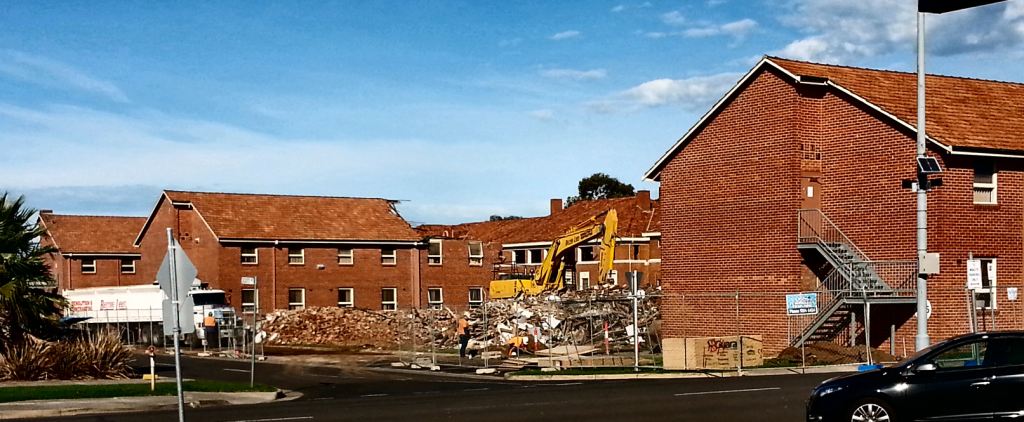
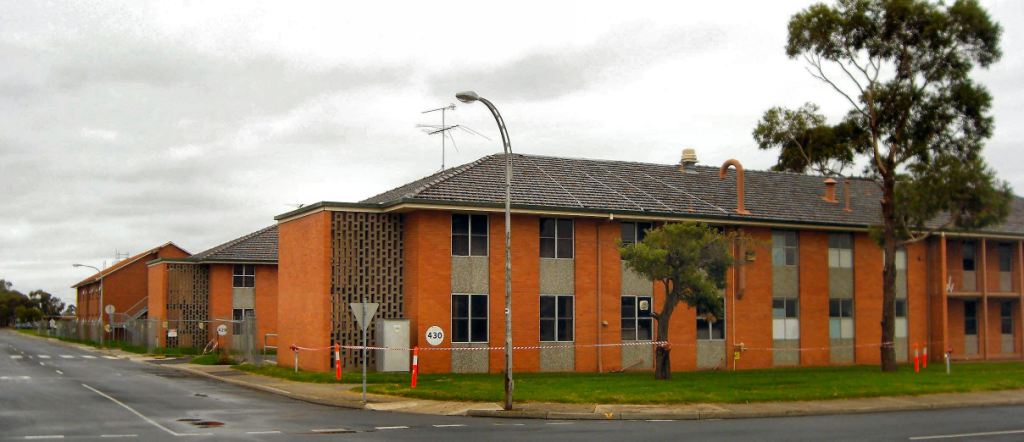
 appeared in the New Straits Times in April this year.
appeared in the New Straits Times in April this year.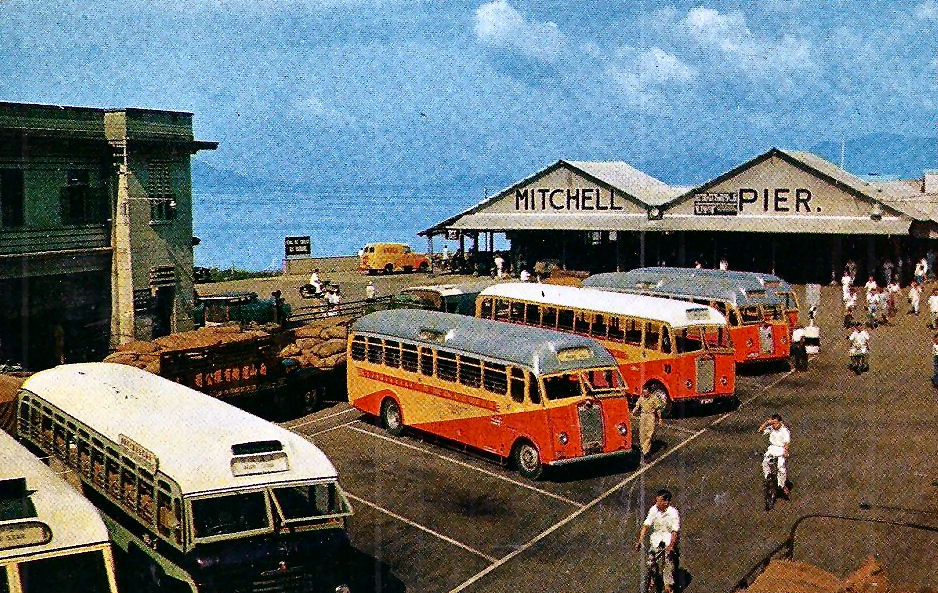
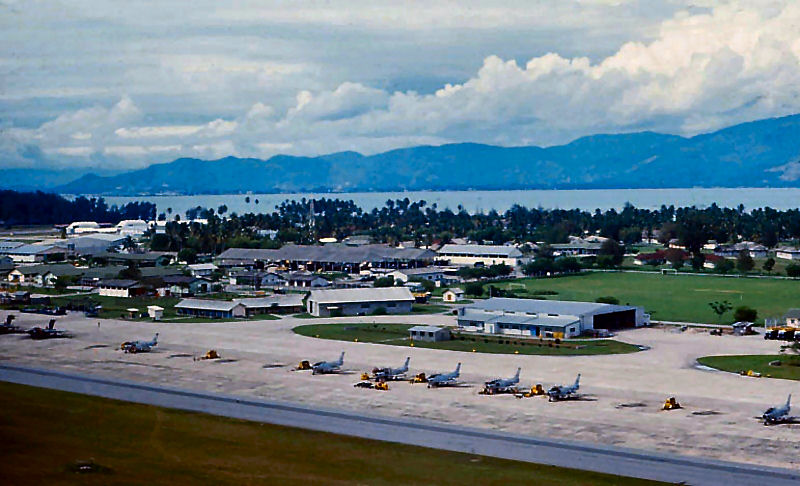
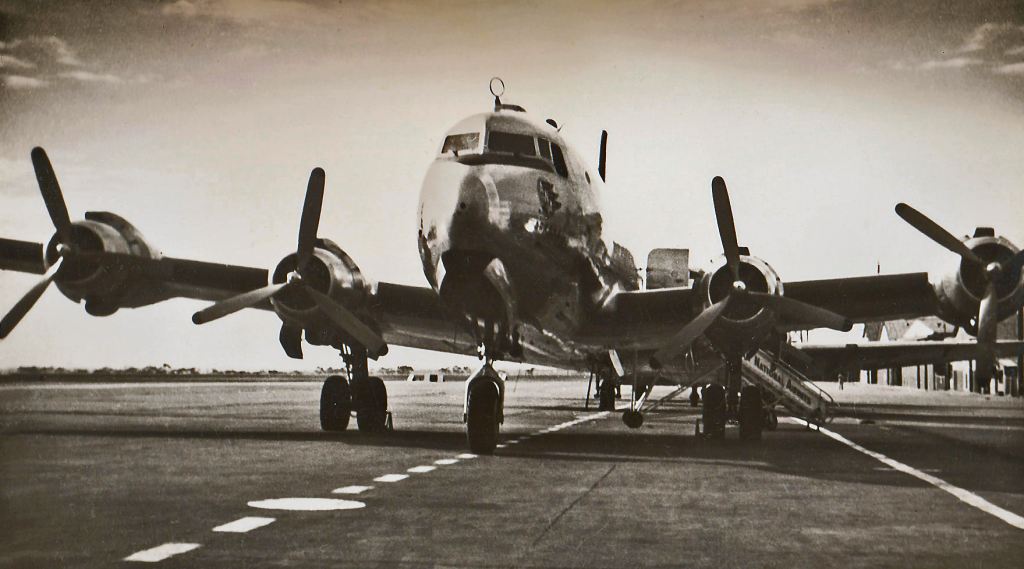
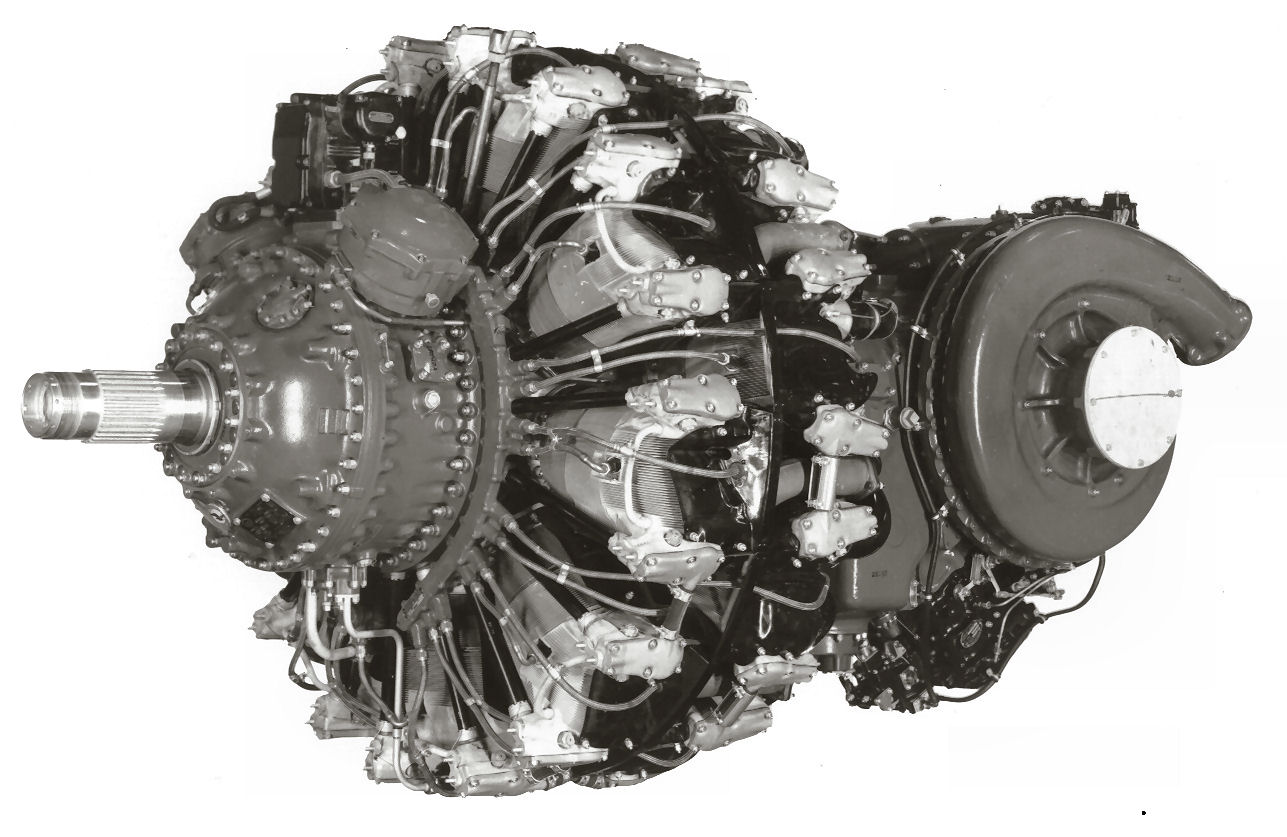
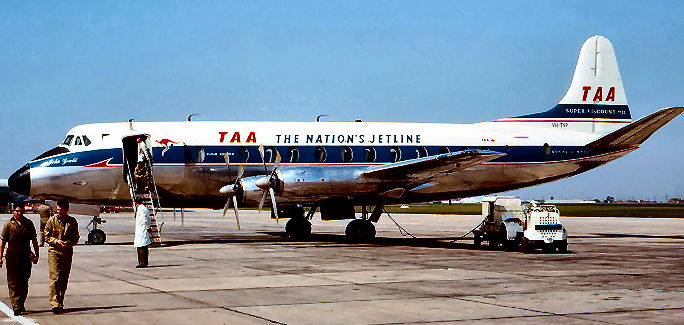
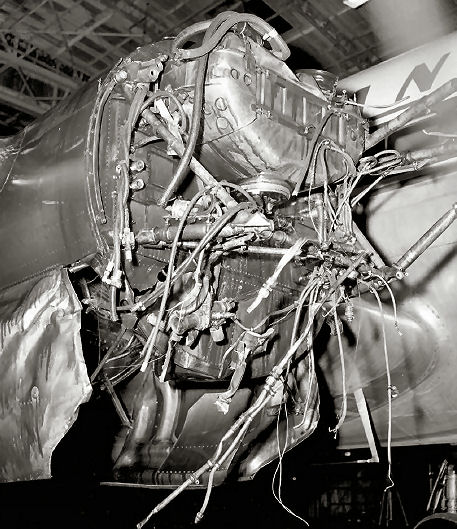
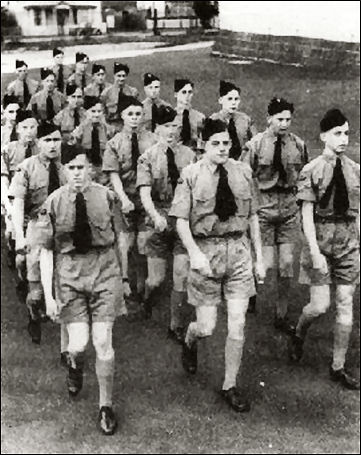 A
bit over 73 years ago, in February 1941, the War Cabinet approved the
formation of a cadet corps as part of the RAAF Reserve. Its primary
objective was to train young men aged between 16 and 18 who desired to
eventually join the wartime RAAF. The name 'Air Training Corps' (ATC) was
formally adopted and a Mr W.A. Robertson was appoi
A
bit over 73 years ago, in February 1941, the War Cabinet approved the
formation of a cadet corps as part of the RAAF Reserve. Its primary
objective was to train young men aged between 16 and 18 who desired to
eventually join the wartime RAAF. The name 'Air Training Corps' (ATC) was
formally adopted and a Mr W.A. Robertson was appoi